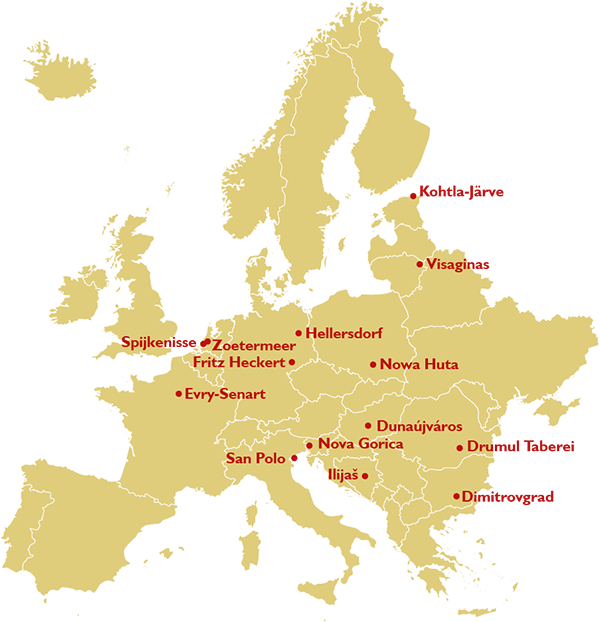On September 15, 1947, a new state border sliced through the centuries-unified Goriška region, disrupting families, fields, houses, economic buildings, courtyards, and streets. The territory had been part of the Habsburg monarchy since 1500, and following World War I, it became a war spoil of Italy. After World War II, the new border division left the region capital Gorizia and its more urbanised area in Italy, while Yugoslavia received the predominantly agrarian and ethnically Slovenian hinterland. Instead of expanding an existing nearby location, Belgrade decided to build an entirely new city. Intent on turning defeat into victory, they planned to construct a “new” Gorica as a symbol of triumph. This city was the first newly planned city in the new Yugoslavia, intended not just for industrial purposes but as a new administrative, educational, and cultural centre, expected to house 10,000 people within five years.
The urban plan was designed by Edvard Ravnikar, a prominent architect influenced by Le Corbusier’s modernist planning, featuring large buildings, long avenues of trees, and spacious green areas. The city’s construction was an ideological project, with youth brigades from across Yugoslavia participating in a show of brotherhood and unity. However, after the Soviet Union expelled Yugoslavia from the Eastern Bloc in 1948, the ideological need for a city that would shine beyond the border was thus gone, and so were the financial inflows from the capital. The development of the city thus soon fell on the shoulders of the local authorities, who did not share the enthusiasm for such an ambitious city plan. Financial constraints led to adaptations of Ravnikar’s original plan, making the city more “human-sized” and avoiding many issues of modernist cities.
With the shift of the Iron Curtain to the eastern border of Yugoslavia, the border was no longer an obstacle, but an opportunity. Rather than a socialist showcase to the west, it became a capitalist entry point to the east. The inhabitants could simply walk to the other side of Europe’s most open border between East and West to get the latest novelties. Among other things, the first pedestrian zone in Yugoslavia was built in the city, inspired by the Lijnbaan, the first ever European pedestrian zone in Rotterdam.
On the other hand, the city wanted to attract tourists from the West. This culminated in the idea of a casino. In 1984, the first Las Vegas-style casino was opened, which was the start of the city’s transformation into one of the most popular gambling destinations. In 1988, it became the largest Yugoslav gambling centre. In 1994, Casino Perla became the largest casino in Europe in terms of the number of gaming tables, which consolidated Nova Gorica on the European gaming map.
In 2004, Slovenia joined the European Union along with nine other countries. The then President of the EU Commission, Romano Prodi, celebrated the accession of ten countries from Central and Eastern Europe in the square in front of the railway station, which is also the common square between the two Gorizia cities. Today, 20 years later, both towns are preparing for becoming the first transborder European Capital of Culture in 2025. 14.000 people now call Nova Gorica home. However, the whole transborder conurbation has around 80.000 inhabitants.
The history of Nova Gorica is a history of constant shifts and changes of ideas. This means that planned towns can also be unplanned. The city needs to discover its identity, which is the main idea behind the project Ab Initio - an urban utopia (part of the ECoC official programme). This means rediscovering the modernist heritage of the city through the analysis of literature and in-depth interviews with locals who built and designed the city. To listen to the voices of the locals and to incorporate their experiences, thoughts, ideas, and wishes into cultural development, various discussions and debates need to be held with different target groups (old people, young people, economists, former workers, etc.). In this way, the local people will become important participants in the construction of the city culture and interpreters of its local heritage, with much potential for straightening the urban community, identity, and well-being.
Representative Organisation:
Association of Humanists from Goriška region





